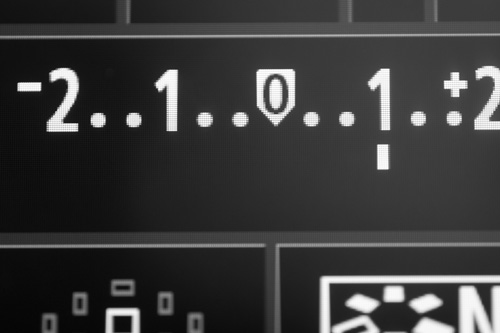Exposure compensation is a common feature in advanced digital cameras and works in conjunction with their automatic metering modes. Exposure compensation allows the photographer to alter the automatic exposure readings of the camera’s metering system by a small amount referred to as EV (Exposure Value) steps or f stops.
Why Exposure Compensation is Necessary
Despite all the marketing hype about their sophisticated metering systems the reality is the camera can be fooled. One of the underlying principles of a digital camera’s light meter is the 18% gray standard and is the amount of light reflected from a middle gray object. This is a compromise around the expected overall relative balance of levels of a light area for the sky and darker areas in remainder of the average photograph.
If the scene does not fit the average then the meter will overexpose or underexpose the picture. Modern pattern metering systems do a reasonable job and are usually not far out, so a minor adjustment with the exposure compensation tool is often all that is needed. For example brightly lit snow is approximately about 1.5 – 2 EV steps brighter than the 18% gray benchmark.
Digital cameras offer far less latitude in their exposure settings than print film. Digital cameras have a smaller dynamic range and it is similar to slide film, long favored by professional photographers. This makes it more important to get the exposure right when taking the photo to minimize any loss of image quality due to clipped highlights or noisy darker areas in the image.
Controls Designed For Quick Operation
The exposure compensation controls are often located on the right hand side of the camera body, near the shutter release button, so photographers can operate them by feel, while still composing the scene through the viewfinder. The information bar in the viewfinder shows the amount of compensation selected.
The convenient location gives a clue to exposure compensation’s role in photography – it is designed for easy and regularly use.
Nikon DSLRs all have a similar exposure compensation control layout , making it easier for that intuitive operation when using more than one model at a time, or making the upgrading process that much easier. The base model D3000 uses the same basic control layout as the top pro model D3.
How to basics
For scenes with light backgrounds the meter tends to underexpose so add some positive exposure compensation, that is a + EV step.
For scenes with darker backgrounds the meter tends to overexpose the image so in this case dial in some negative exposure compensation, or –EV steps.
The adjustment range is usually quite small, another indication that the camera designers intend exposure compensation as fine tuning tool. Some cameras allow the choice of EV steps in either half or thirds of an f stop.
Photographers should use the histogram and exposure warnings on the rear LCD screen to review test shots for a guide to adjustments.
Experienced photographers in a familiar type of scene will often set exposure compensation before they do any metering or take any test shots. Another pro strategy is to select a small amount of negative exposure compensation to reduce the chance of clipped highlights.
Typical Situation
The basketball shot below had exposure compensation applied in the Tv or shutter speed priority mode. Shooting sports in this particular location exposure requires some exposure compensation as the lights reflecting off the light wooden floor fools the cameras meter into underexposing the image. This is definitely in respect to the players, who only occupy a small part of the image compared the majority of shiny polished light colored wooden boards.
Of course being a sports event the exposure may change, especially in this stadium where there is uneven lighting. Therefore overall exposure levels need to change as the players and ball move around the court, but a bit of extra brightness is still needed to compensate for the light from the floor.
After some test shots a good level of exposure compensation for this particular camera and lens combination, Pentax K10D and DA* 50-135mm f2, is plus 0.7 of an f stop,
Advantages and Alternatives
The alternatives of using full manual exposure mode or changing the metering mode to spot metering are more precise and offer more control over the exposure levels. However, in a rapidly changing situation exposure compensation allows the camera’s meter to follow changes in light levels while still using the photographer’s allowance for the tricky lighting.









